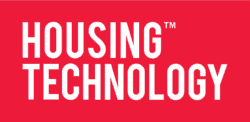When you look at the possibilities of what the internet of things could offer social housing, it’s nothing short of miraculous. Not only would homes be healthier and better maintained, but there would be a lot less stress for both housing providers and their tenants. Furthermore, if the data was shared responsibly, architects, urban designers and numerous other groups of people could use the data to design a better future. But where could we get to – what is the ultimate potential here?
A better life for tenants
Central to all IoT projects should be the realisation of a simple truth: making homes better for tenants and housing providers. Good IoT should make both sides feel reassured and provide feelings of safety and comfort. For the tenant, that’s about knowing their house is healthy, safe and secure; for a housing provider, it’s about knowing their properties are up to standard, repairs can be flagged up and the property is in a good, cost-efficient state of maintenance.
It could be a fascinating vision where, one day, there’s a more or less autonomous system where IoT sensors, thanks to the data that has been gathered and analysed, predict that something in the home is going to break and not only orders the replacement part but can work out when to send someone round to carry out the repair at a time that minimises inconvenience. But we’re not there yet.
There are endless concepts for where IoT sensors could carry out work. Air quality sensors, like those offered by BRS Technology, can detect temperature, moisture, damp and environmental issues while there are systems that can also monitor boilers, water and sanitation systems and even lifts.
Again, in the future, these things will be repaired at times most residents won’t even notice, minimising disruption. No more waiting weeks for a boiler repair or lift repair when the data can work out in advance when the breakage is likely to happen and arrange for repairs to take place at times of minimal disruption.
Ready for adoption
So far, the concept of sensors in homes has generally been widely accepted. Homes have detectors for carbon monoxide, smoke and fire, with some countries now moving on to integrated systems.
Furthermore, many homes have enthusiastically taken up Alexa, Google Home or Apple HomePod devices, which are themselves essentially data-collecting IoT devices, even if they aren’t labelled as such. Additionally, as these devices have proliferated, people have been become used to the idea of wi-fi controlled lights, kettles with Bluetooth connections and so on.
Also, informed people want to have the best materials that make their homes safe and secure. It’s now commonplace for tenants to do research on the energy rating of a home, and it’s not a stretch to think that in future they will also expect data on other items like internal air quality and potential moisture/damp issues.
People are becoming comfortable with the idea of the connected home and how it works. But being comfortable with the concept doesn’t necessarily mean people will accept the reality once the implications set in.
A better future, but for who?
For example, consider a sensor that monitors audio levels. What happens if it persistently detects too much noise in a tenant’s home? What legal responsibility is there in that situation? Noise complaints are one of the most common reasons for police being called to social housing, so what happens when there are sensors that can detect, in essence, noise pollution? Could that sensor be used as evidence against the tenant? And if the sensor detected high levels of external noise, could the tenant use the data as the basis for demanding that their housing provider upgraded their home to make it more soundproof?
As another example, could an air quality sensor be used to detect the presence of drugs such as cannabis in a property? Similarly, what happens if a sensor detects that there are too many people in a house? As we deal with coronavirus and future outbreaks or lockdowns, could we see sensors being used as a way of enforcing how many people are in a home?
Today’s pertinent questions
It’s now routine for car insurance companies to insist on cars for young drivers having black boxes fitted. Could home sensors be a new version of that, where new tenants have no choice about having the sensors installed? Equally, might sensors become a legal requirement? And will that bother tenants or will they be comforted by the thought?
And what about housing providers themselves? While we might hope that sensors will usher in an era of well-maintained properties, what happens if the sensors detect an abundance of properties needing updates and repairs? It will be a lot harder to hide work when the data is there for all to see. Will a rush of repair jobs see a price hike for tenants?
And one final question – who will own the sensors’ data?
Michael McKiernan is a director and co-founder of BRS Technology.

